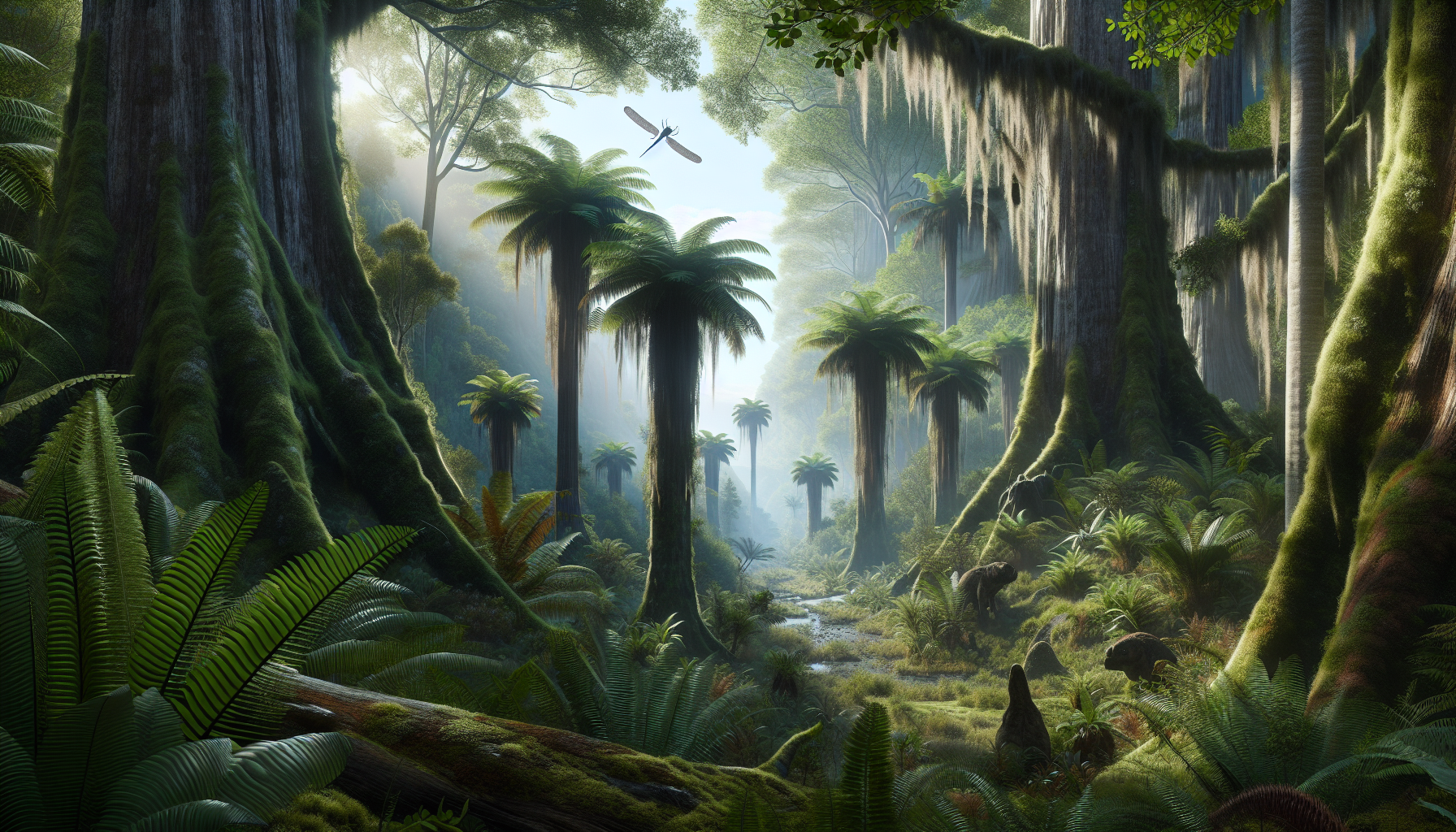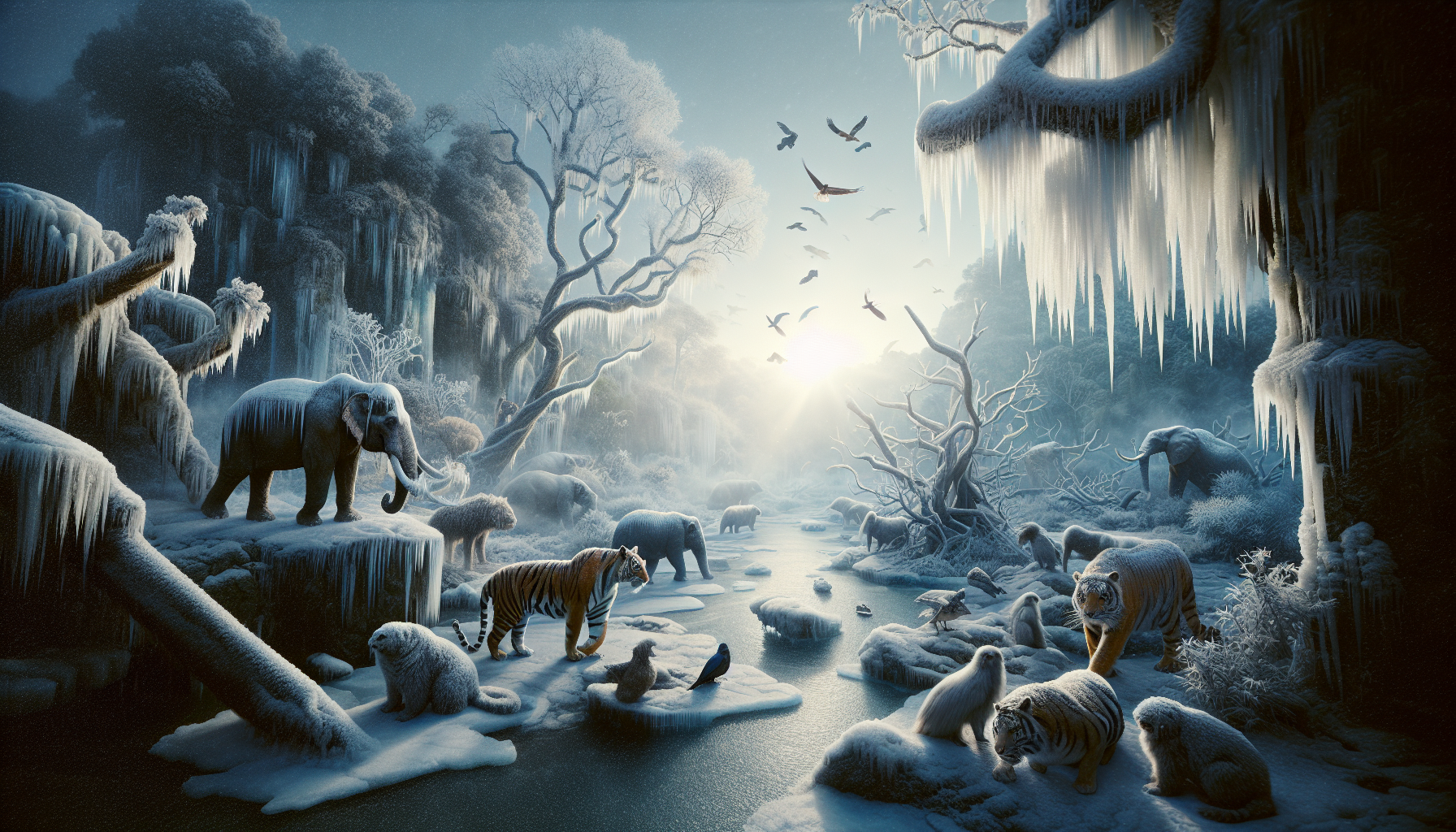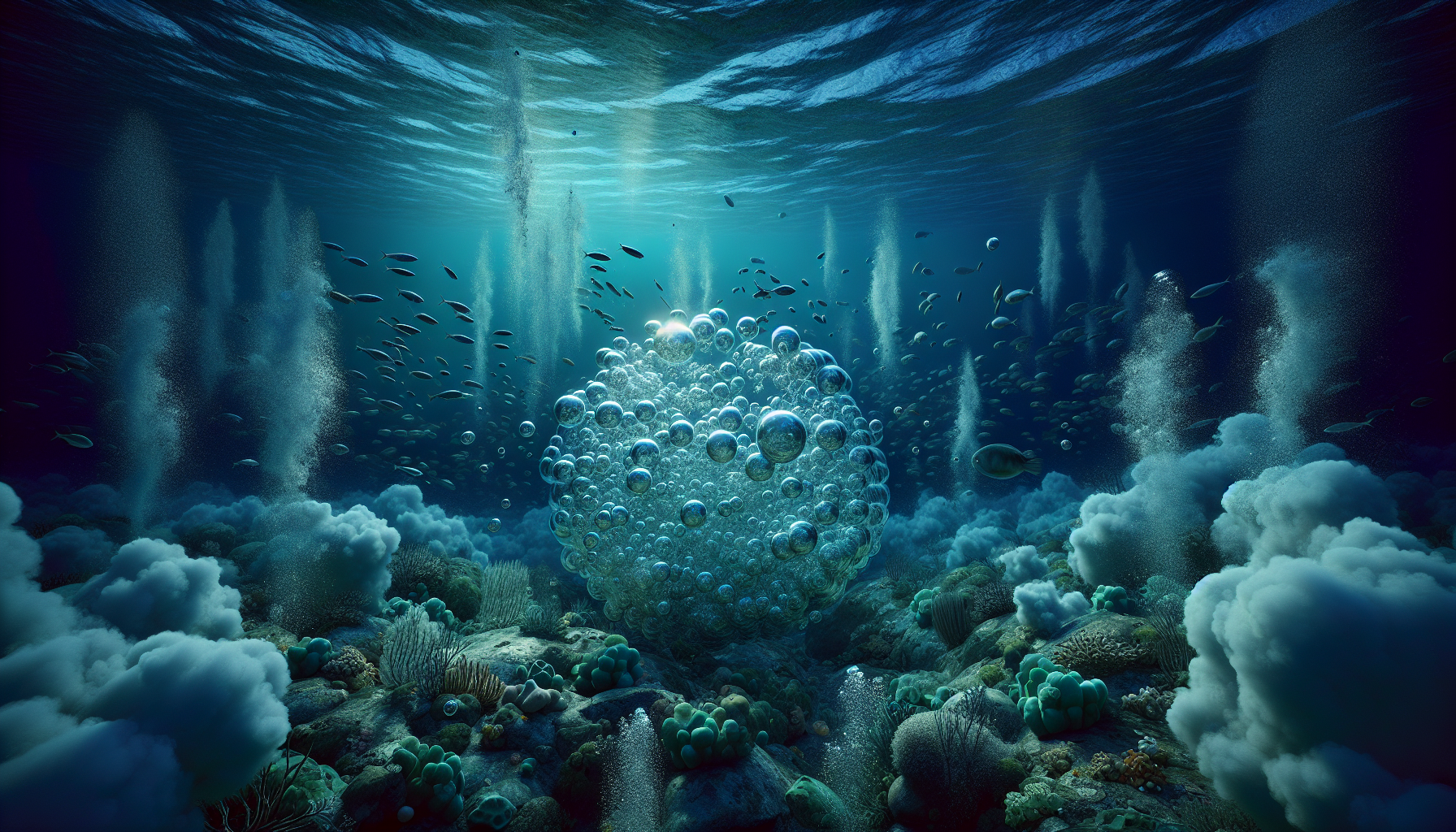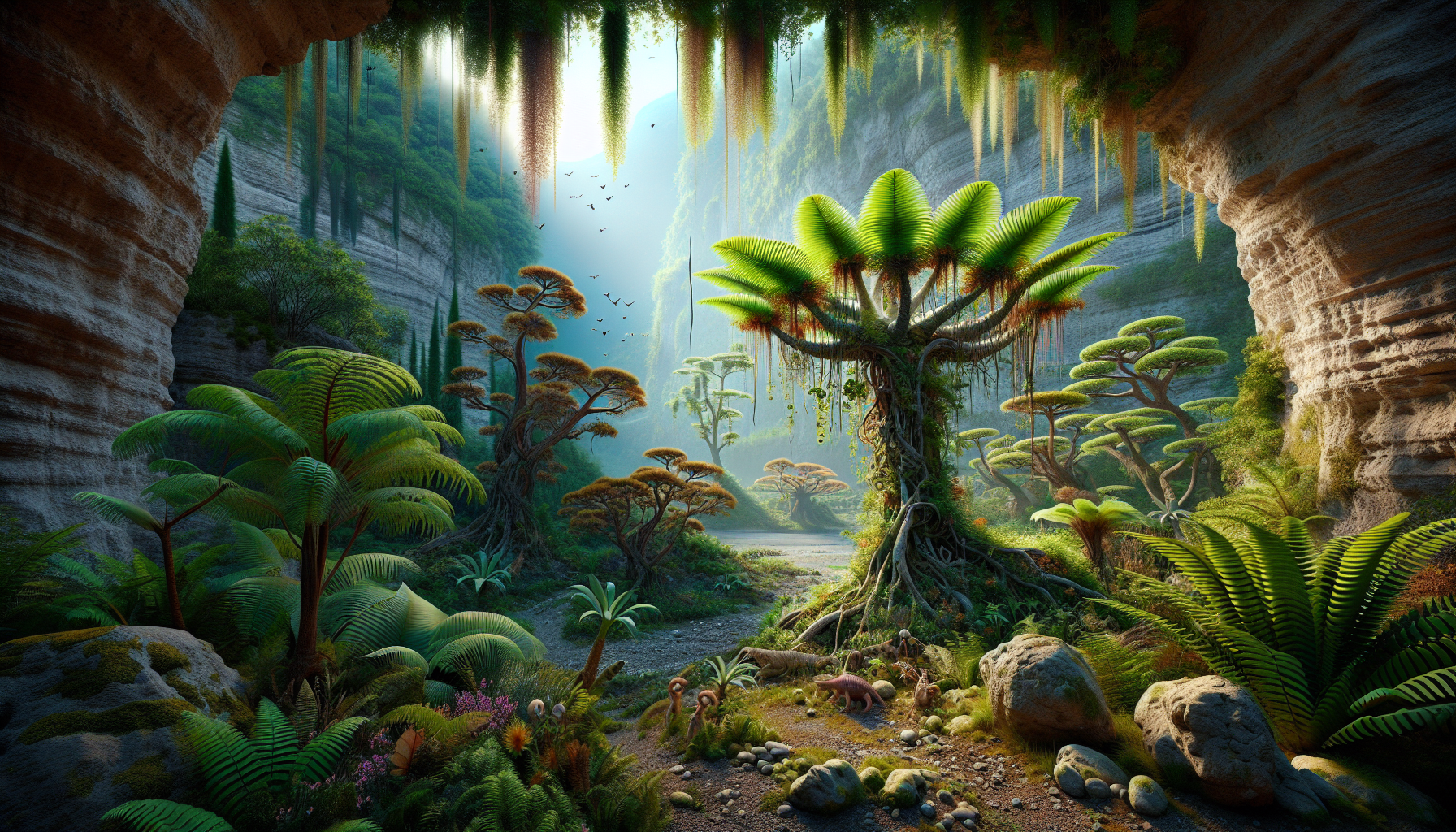In a world where modern wonders often steal the spotlight, it’s easy to forget the awe-inspiring spectacles that existed millions of years before humans roamed the Earth. Picture a time when colossal trees towered over expansive landscapes, and giant insects ruled the skies. Welcome to the Carboniferous Period, a prehistoric era that gave rise to the planet’s first megaforests, brimming with life forms that were as fascinating as they were gigantic. This ancient epoch, dating back approximately 359 to 299 million years ago, set the stage for the lush, green environments we see today, yet few are familiar with its grandeur. Join us as we embark on an exhilarating journey to uncover the ancient wonders of the Carboniferous Megaforest—a prehistoric paradise of gigantic proportions. 🌲✨
Imagine standing amidst an endless expanse of towering trees, some reaching heights of over 100 feet, their massive trunks encircled by thick ferns and sprawling undergrowth. This was a world dominated by plants that would seem alien to us now, with primitive vascular systems yet unmatched in their ability to sequester carbon and oxygenate the atmosphere. The lush canopy above filtered sunlight into soft, dappled patterns on the forest floor, creating an otherworldly ambience that sheltered a myriad of life forms. In this bygone era, amphibians thrived in swampy conditions, and the early ancestors of reptiles began to emerge, forever altering the trajectory of life on Earth. The Carboniferous Megaforest was more than just a collection of trees—it was a vibrant ecosystem teeming with life, diversity, and evolutionary innovation.
Our exploration will traverse the fascinating layers of this ancient world, beginning with the geological forces that crafted its rich soil and unique climate. We’ll delve into the incredible biodiversity that characterized the era, from the massive lycophytes and seed ferns to the dragonfly-like Meganeura, with its astonishing wingspan rivaling that of a modern-day hawk. As we venture deeper, we’ll uncover the intricate relationships between flora and fauna, examining how these primordial interactions laid the groundwork for complex ecosystems. The Carboniferous Megaforest was a crucible of evolution, where adaptive strategies and environmental pressures converged to shape life forms that were both wondrous and bizarre.
But the story of the Carboniferous Megaforest is not just one of creation—it is also a tale of transformation and transition. As the period drew to a close, shifting climates and geological upheavals began to reshape the landscape, leading to the demise of these majestic forests. In their place, new environments emerged, setting the stage for the subsequent Mesozoic Era. Understanding the rise and fall of the Carboniferous Megaforest offers profound insights into the dynamics of ecological change and resilience. Through this exploration, we hope to inspire a deeper appreciation for the ancient forces that have shaped our world and to spark curiosity about the hidden chapters of Earth’s history that continue to influence the present and future. 🌍🔍
The Carboniferous Period: A Gateway to the Megaforest
The Carboniferous Period, a segment of the late Paleozoic Era, is renowned for its lush vegetation and the rise of extensive megaforests. Spanning approximately 60 million years, from 359 to 299 million years ago, this era laid the groundwork for the development of coal, giving it its name, derived from “carbon.” The planet’s atmosphere was vastly different then, with oxygen levels reaching up to 35%, compared to today’s 21%. This oxygen-rich environment supported gigantism among flora and fauna, leading to forests teeming with colossal trees and insects.
The megaforest ecosystems were primarily composed of lycophytes, ferns, and early gymnosperms. The most iconic plants were the towering lycophytes, such as Lepidodendron and Sigillaria, which reached heights of over 30 meters. Their unique reproduction process involved spores rather than seeds, a characteristic that would eventually lead to their decline as seed-bearing plants took over in subsequent periods. These forests also included horsetails and seed ferns, each contributing to the rich biodiversity of the era.
The dense vegetation played a crucial role in shaping the planet’s climate. Through photosynthesis, these plants absorbed carbon dioxide, releasing oxygen and storing carbon in the form of plant biomass. As these plants died, they accumulated in swampy areas, forming thick peat layers. Over millions of years, these layers transformed into coal through geological processes, a resource that humanity heavily relies on today. The Carboniferous forests were, in essence, the world’s first carbon capture and storage system.
Inhabitants of the Megaforest: Life Among the Giants
The Carboniferous Period was a time of unparalleled biodiversity, with vast numbers of species adapting to life within these colossal forests. Arthropods, especially insects, were among the most successful groups. The high oxygen levels allowed them to grow to unprecedented sizes, with creatures like the dragonfly-like Meganeura boasting wingspans of over 70 centimeters. This gigantism was not limited to insects; early amphibians and primitive reptiles also thrived in these environments, laying the groundwork for the later dominance of reptiles.
Amphibians were the dominant vertebrates of this era. They evolved into a variety of forms, from small, streamlined swimmers to larger, more robust terrestrial species. Their reliance on water for reproduction, however, eventually limited their dominance as drier climates emerged in the Permian Period. Among the notable species was the Eryops, a large, crocodile-like amphibian that prowled the swamps and streams of the Carboniferous landscape.
Early reptiles, though less dominant, began to emerge during the latter part of the Carboniferous. These pioneers, such as Hylonomus and Petrolacosaurus, laid eggs with protective shells, an evolutionary breakthrough that allowed them to colonize drier environments. This adaptation set the stage for the Mesozoic Era, famously known as the Age of Reptiles. Meanwhile, the Carboniferous forests provided a sanctuary for these creatures, offering abundant food and shelter.
The Geological Canvas: Formation and Legacy of Coal
The geological processes of the Carboniferous Period left an indelible mark on Earth’s history through the formation of extensive coal deposits. As the lush vegetation of the megaforests decayed, it formed thick layers of peat in swampy lowlands. Over millions of years, these peat deposits were buried under sediment, subjected to heat and pressure, and transformed into coal through a process known as coalification.
This transformation occurred in distinct stages, from peat to lignite, then to bituminous coal, and finally to anthracite. The resulting coal seams became invaluable energy resources during the Industrial Revolution and continue to play a significant role in global energy production today. The table below illustrates the stages of coal formation and their characteristics:
| Stage | Characteristics | Carbon Content |
|---|---|---|
| Peat | Partially decayed plant matter | Lowest |
| Lignite | Soft, brownish coal | Low |
| Bituminous | Soft, black coal | Moderate |
| Anthracite | Hard, black coal | Highest |
This extensive carbon sequestration process was crucial in regulating the Earth’s climate over millions of years, as carbon was locked away in these coal deposits. Modern research continues to explore the legacy of these ancient processes, shedding light on contemporary challenges related to climate change and energy use.
Preservation and Fossilization: Windows into the Past
The fossilization of plants and animals from the Carboniferous Period provides valuable insights into the ecosystem dynamics of this prehistoric paradise. Exceptional preservation conditions in swampy environments led to a wealth of fossils, including intricate plant impressions and well-preserved arthropods. These fossils serve as time capsules, offering glimpses into the diversity and complexity of life during this epoch.
Plants, in particular, left an abundant fossil record. The fossilized remains of lycophytes, ferns, and seed ferns offer clues about the evolutionary transitions of these groups. Researchers study these fossils to understand plant morphology, reproductive strategies, and responses to environmental changes. The delicate details captured in these fossils reveal the intricate structures of ancient plants, from leaves to reproductive organs.
Insect and amphibian fossils also provide critical information about the dynamics of ancient ecosystems. For instance, the fossilized remains of giant dragonflies, such as Meganeura, reveal the ecological niches these creatures occupied. Additionally, trackways and body fossils of amphibians and early reptiles offer insights into their behavior, locomotion, and ecological interactions. Watch the video below for an engaging exploration of the Carboniferous megaforest’s legacy:
The Carboniferous Rainforest Collapse – PBS Eons
Environmental Changes and the End of the Megaforest
As the Carboniferous Period drew to a close, significant environmental changes began to reshape the Earth’s ecosystems. The gradual transition from a warm, humid climate to a cooler, drier one led to the decline of the megaforests. This shift, known as the Carboniferous Rainforest Collapse, marked the end of the vast coal-forming swamps and the rise of more open environments.
Several factors contributed to these climatic shifts, including tectonic activity, changes in sea level, and volcanic eruptions. The formation of the supercontinent Pangaea altered ocean and atmospheric circulation patterns, disrupting the stable, moist conditions that had supported the megaforests. These changes in climate triggered a cascade of ecological shifts, leading to the extinction of many plant and animal species.
Despite the decline of the megaforests, the Carboniferous Period laid the foundation for future evolutionary developments. The adaptations that emerged during this time, such as the ability to reproduce independently of water, allowed certain species to thrive in the new environmental conditions. The legacy of the Carboniferous megaforest endures, providing a rich tapestry of fossil evidence and insights into the evolutionary processes that have shaped life on Earth.
- Discover more about the Carboniferous Period and its impact on today’s world.
- Explore the evolutionary significance of the megaforest’s biodiversity.
- Understand the geological processes that led to the formation of coal.
- Investigate the fossil records to gain insights into ancient ecosystems.

Conclusion
As we draw to a close on our exploration of the Carboniferous Megaforest, it is clear that this prehistoric paradise offers a wealth of insights into both our planet’s ancient past and its potential future. The Carboniferous period, spanning approximately 60 million years, was a time of remarkable geological, climatic, and biological transformations. It was during this time that Earth’s atmosphere saw an unprecedented increase in oxygen levels, which in turn supported the growth of enormous plants and towering trees that formed dense, sprawling forests, often referred to as the first great rainforests.
These megaforests were not just significant for their sheer size and the biodiversity they housed, but they were also critical in shaping the very atmosphere we breathe today. The immense amounts of organic matter these forests produced and subsequently sequestered through the process of coal formation have had long-lasting impacts on Earth’s carbon cycle. The significance of this process cannot be understated, as it laid the foundation for the fossil fuels that have powered human civilization. Thus, understanding the dynamics of these ancient ecosystems is vital for comprehending how carbon cycles operate, especially in today’s context of climate change.
Another intriguing aspect of the Carboniferous Megaforest is the evolution of life forms it supported. During this era, arthropods reached gigantic sizes, with some species of millipedes growing to lengths of over two meters. The proliferation of such giant species was likely facilitated by the high oxygen levels, which also provided a glimpse into how environmental factors can drive evolutionary paths in unexpected directions. Furthermore, the period saw the early diversification of amphibians and the first reptiles, marking a pivotal moment in vertebrate evolution. These evolutionary advancements underscore the importance of the Carboniferous period as a time of significant biological innovation and adaptation.
In addition to its ecological and evolutionary significance, the Carboniferous Megaforest also offers profound lessons on resilience and adaptability. Despite the eventual decline of these forests due to climatic shifts and other factors, the legacy they left behind continues to influence modern ecosystems. The concept of resilience observed in these ancient forests is particularly relevant today as we confront environmental challenges that demand innovative solutions and sustainable practices.
The study of these ancient wonders not only enriches our understanding of the past but also serves as a powerful reminder of the interconnectedness of life and the environment. It challenges us to reflect on our current interactions with nature and inspires us to adopt a more sustainable approach to ensure the survival of our planet’s diverse ecosystems.
In conclusion, the Carboniferous Megaforest represents more than just an intriguing chapter in Earth’s history; it is a testament to the enduring power of nature and its ability to shape life in all its forms. As we continue to uncover the mysteries of these ancient forests, let us also take a moment to appreciate their lasting impact on our world.
We encourage you to delve deeper into this fascinating topic and consider the broader implications it holds for our understanding of climate and ecological conservation. Share your thoughts and insights with us and others, as discussions can lead to greater awareness and action. Let the lessons from the Carboniferous period inspire you to contribute to the preservation of our natural world, ensuring that it remains as vibrant and diverse for future generations as it was millions of years ago. 🌿
For further exploration on the Carboniferous period and its megaforests, reputable sources such as the Smithsonian Institution and the Natural History Museum offer extensive resources and insights:
– Smithsonian Institution: Carboniferous Period Overview
– Natural History Museum: Prehistoric Rainforests
Feel free to explore these resources and join the conversation about the wonders of our planet’s history and its relevance to our future. Together, we can foster a greater appreciation for the natural world and encourage positive change. 🌍
Toni Santos is a visual storyteller and ecological artisan whose work delves into the haunting beauty of extinct biomes — landscapes that once thrived with life, now lost to time. Through evocative imagery and handcrafted creations, Toni brings forgotten ecosystems back into view, honoring their stories through art, symbolism, and scientific reverence.
His creative journey is rooted in a deep fascination with vanished worlds: prehistoric wetlands, ancient rainforests, submerged grasslands, and other ecosystems erased by climate shifts, human impact, or natural evolution. Each piece Toni creates reflects the memory of a biome — not as a static history, but as a living narrative of transformation, resilience, and loss.
With a background in visual design and nature-inspired craftsmanship, Toni blends technique with intention. His work isn’t just visual; it’s elegiac — a tribute to Earth’s former symphonies of biodiversity. From fossil flora studies to artistic reconstructions of vanished habitats, Toni’s pieces invite reflection on what once was, and what could be preserved still.
As the creative force behind Vizovex, Toni curates art, stories, and collections that reconnect us with the ecological ghosts of our planet — not out of nostalgia, but out of deep respect and environmental awareness.
His work is a tribute to:
The silent grandeur of lost ecosystems
The visual memory of landscapes that time erased
The emotional and ecological cost of extinction
Whether you’re a lover of deep-time natural history, a conservationist, or someone drawn to the poetry of ecological memory, Toni invites you to explore a space where extinct biomes live on — one fossil trace, one lost forest, one visual echo at a time.





